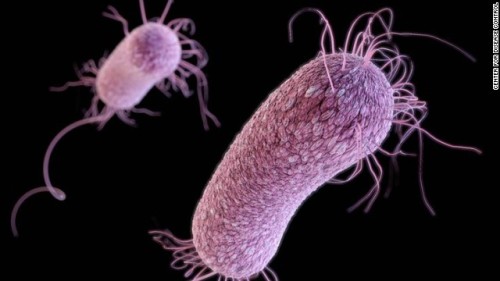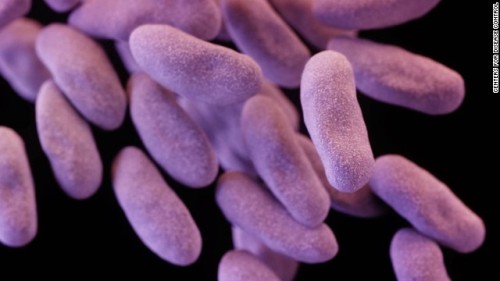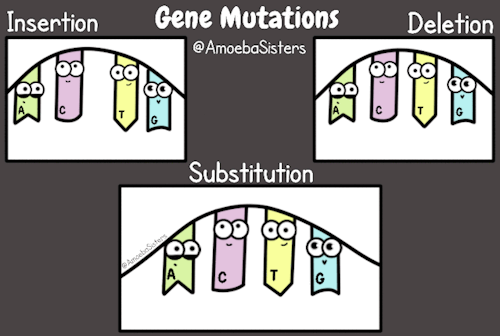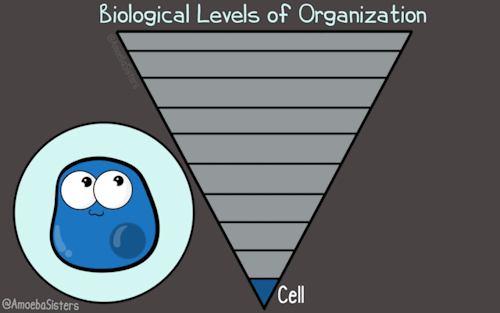With All The Biochemistry Jokes Being Thrown Around, Here’s One From My End Of The Biology Spectrum!

With all the biochemistry jokes being thrown around, here’s one from my end of the biology spectrum!
More Posts from Bio100cia-blog and Others


A tardigrade (waterbear) hatching.
Tardigrades reproduce sexually and females lay eggs. She’ll actually shed her skin first and then lay her eggs inside of it. The babies then hatch from their eggs and then have to crawl out of the skin husk. Fun fact: tardigrades are born with the same number of cells as their adult counterparts - their cells just get bigger as they age.
Clostridium difficile

Acinetobacter

Streptococcus pneumoniae

Extended-spectrum β-lactamase (ESBLs)

Enterococcus

Staphylococcus aureus

Pseudomonas aeruginosa

Enterobacteriaceae

Shigella

Neisseria gonorrhoeae

Candida

Campylobacter

Tuberculosis

Salmonella


here’s a happy cell to welcome summer :)

Terrifying. 🎃

Gene mutations seem a little “Twilight Zone” to us.

A look at levels!



Mitosis, Neurons, and the DNA replication complex.

Bacteria and fungi in petri dishes
Klari Reis uses plastics, paints and other mediums to create the idea of bacteria and biological matter within petri dishes
![Amazing Shots Of A Cell Splitting In Two! [Photos Via María José Calasanz]](https://64.media.tumblr.com/7f3390c49f6bc9a712f44bc14f59b0f3/tumblr_omva19tRli1s04h2ho1_500.jpg)
Amazing shots of a cell splitting in two! [Photos via María José Calasanz]

Image of the Week - September 10, 2018
CIL:39062 - http://cellimagelibrary.org/images/39062
Description: This light micrograph shows the outside edge of two seminiferous tubules of a mouse testis. This section is a 1um thick transverse section, stained with toluidine blue to highlight the cells, with the nucleus staining a darker blue. The dark blue line separating the two seminiferous tubules consists mostly of myoid (muscle) tissue. The majority of cells seen in this image (arranged in layers) are germ cells, which, by repeated cell division, eventually produce spermatozoa. Chromosomes are visible in most of the nuclei of the cells. The cell with a deeply-stained nucleus and even darker nucleolus is a Sertoli cell (‘nurse cell’) that has fine cytoplasmic extensions branching between the other cells to nurture the developing germ cells.
Author: Spike Walker
Licensing: Attribution-NonCommercial-NoDerivs 2.0 UK: England & Wales (CC BY-NC-ND 2.0 UK)
-
 sirrobertpeelofficial liked this · 1 year ago
sirrobertpeelofficial liked this · 1 year ago -
 daily-borgia liked this · 1 year ago
daily-borgia liked this · 1 year ago -
 dreamingmellon reblogged this · 1 year ago
dreamingmellon reblogged this · 1 year ago -
 i-dunno-but-im-hot-hot-so-hot liked this · 2 years ago
i-dunno-but-im-hot-hot-so-hot liked this · 2 years ago -
 sweettoastthoughts reblogged this · 3 years ago
sweettoastthoughts reblogged this · 3 years ago -
 pretendgerman liked this · 4 years ago
pretendgerman liked this · 4 years ago -
 skybs liked this · 4 years ago
skybs liked this · 4 years ago -
 needklainenow liked this · 4 years ago
needklainenow liked this · 4 years ago -
 flintenweib liked this · 4 years ago
flintenweib liked this · 4 years ago -
 phiillii reblogged this · 4 years ago
phiillii reblogged this · 4 years ago -
 gastronomics-world liked this · 4 years ago
gastronomics-world liked this · 4 years ago -
 cyberpeanutpeachsworld liked this · 4 years ago
cyberpeanutpeachsworld liked this · 4 years ago -
 airwitchi liked this · 5 years ago
airwitchi liked this · 5 years ago -
 stilinski-lover-24 liked this · 5 years ago
stilinski-lover-24 liked this · 5 years ago -
 nerdyhbic reblogged this · 6 years ago
nerdyhbic reblogged this · 6 years ago -
 j4ir4bimaelsworld liked this · 6 years ago
j4ir4bimaelsworld liked this · 6 years ago -
 lilacslug reblogged this · 6 years ago
lilacslug reblogged this · 6 years ago -
 pyou reblogged this · 6 years ago
pyou reblogged this · 6 years ago -
 cachetitos-13 liked this · 6 years ago
cachetitos-13 liked this · 6 years ago -
 bio100cia-blog reblogged this · 6 years ago
bio100cia-blog reblogged this · 6 years ago -
 astradolx-blog liked this · 6 years ago
astradolx-blog liked this · 6 years ago -
 monkeymari7 liked this · 6 years ago
monkeymari7 liked this · 6 years ago -
 rebelmae liked this · 6 years ago
rebelmae liked this · 6 years ago -
 searchinggg reblogged this · 6 years ago
searchinggg reblogged this · 6 years ago -
 doctornimsblog liked this · 6 years ago
doctornimsblog liked this · 6 years ago -
 justafanlove liked this · 6 years ago
justafanlove liked this · 6 years ago -
 immaluke liked this · 6 years ago
immaluke liked this · 6 years ago -
 sanutatlim liked this · 6 years ago
sanutatlim liked this · 6 years ago -
 lovingallpink liked this · 6 years ago
lovingallpink liked this · 6 years ago -
 the-shadows-request-candy-corn liked this · 6 years ago
the-shadows-request-candy-corn liked this · 6 years ago -
 lunarian-latte reblogged this · 6 years ago
lunarian-latte reblogged this · 6 years ago -
 lunarian-latte liked this · 6 years ago
lunarian-latte liked this · 6 years ago -
 the-note-highlight liked this · 6 years ago
the-note-highlight liked this · 6 years ago -
 sewandstudy reblogged this · 6 years ago
sewandstudy reblogged this · 6 years ago -
 supreeto0o liked this · 6 years ago
supreeto0o liked this · 6 years ago -
 studywannabeblr liked this · 6 years ago
studywannabeblr liked this · 6 years ago